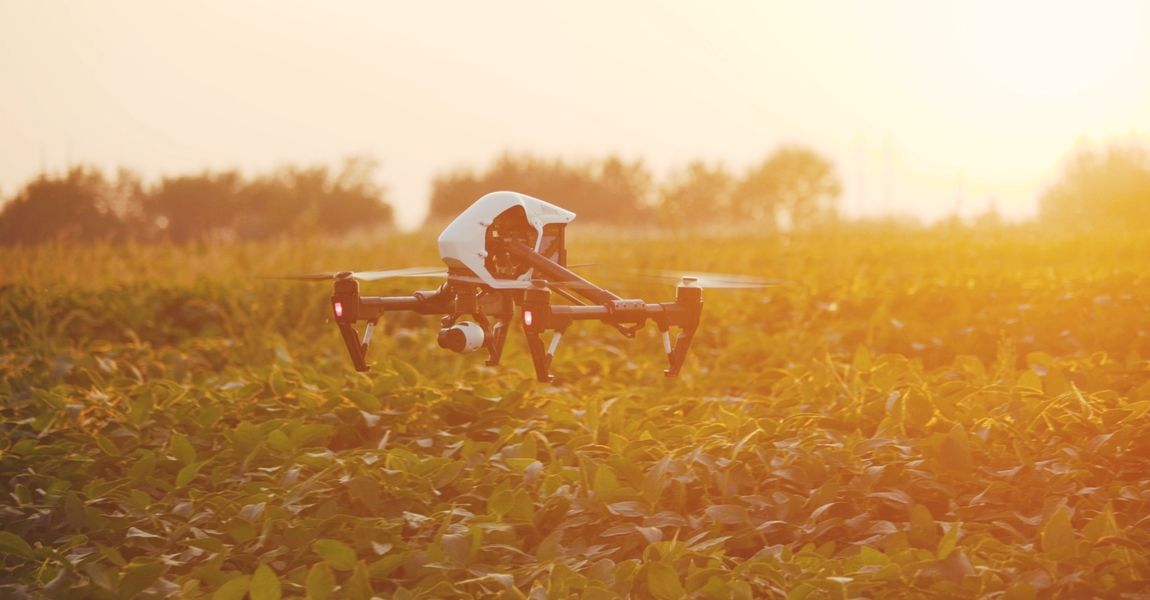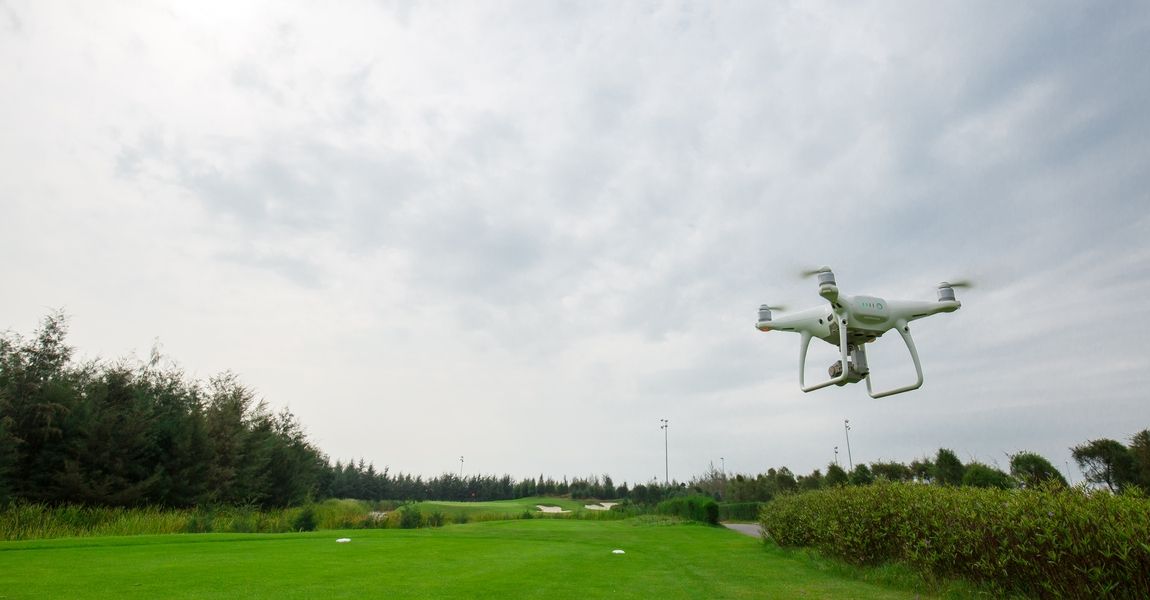Picking The Right Radar: Why You Need Drone Radar to Detect Drones Properly
Danny Romano Aug 14, 2022 8 mins
Every day, more agencies and institutions come to us for contemporary counter-drone systems. Each client brings their own set of challenges and a host of worthwhile questions. Most of them are unique, but there is one question that comes up all the time. It goes something like this: “I already have radar. Why should I buy yours?”
As the customer, you might assume we’re only interested in selling our products. After all, we are known for making drone radar. But, if you shop around, you’ll notice that other companies — even those that don’t manufacture their own radar — still want to sell it to you. So, what’s wrong with your existing radar, and why are C-UAS providers unwilling to work with it?
While drone radar is arguably the single best choice for drone detection, non-drone radar is one of the worst. Radar systems created specifically for drones differ greatly from other types, and the attributes that make them such good drone detectors are absent in radars built for other purposes. To help researchers understand why drone radars are necessary, let’s scan through the qualities that set them apart.
 Above: Modern drone radar systems, along with RF-based and other
forms of purpose-built drone detectors, are popping up at important
facilities around the globe.
Above: Modern drone radar systems, along with RF-based and other
forms of purpose-built drone detectors, are popping up at important
facilities around the globe.
Small Object Expertise
Here’s one that’s obvious. Drone radars must be able to detect small objects and follow their movements reliably. Radars from other categories have trouble with this, simply because they aren’t designed for it. For instance, air traffic control (ATC) radars are meant for measuring the speed and trajectory of passenger aircraft. They do so extremely well, enabling air transport authorities to manage complex routes for thousands of airborne vehicles at a time.
All manned aircraft, from two-seat helicopters to Airbus A380s, are several times larger than the average drone. To see anything smaller, an ATC radar would need a dramatic reconfiguration. Understandably, some can’t be set up this way at all, since it would make them worse at doing what they’re supposed to. Besides, just being able to see small objects isn’t enough.
Looking at objects on a different scale elicits different complications. An ATC radar can “paint” a contact and decide whether it’s a 737 or a G6. Either way, it never has to wonder if the object is an airplane. At that size, what else could it be? Drones, on the other hand, aren’t so distinct. They can be mistaken for a lot of things, from birds to birthday balloons. To a radar that can’t discriminate, a plastic bag floating in the wind is indistinguishable from a drone. But a drone radar knows the difference.
Take for example the TrueView® R30, our flagship drone detector radar. It contains an onboard graphics processor and state-of-the-art machine learning firmware. With hardware-accelerated object classification, it can analyze micro-doppler signatures and compare them to known distractions. In other words, it only reports objects with threat potential. If an R30 shows you a blip, that blip is probably worth your attention.
An ATC radar — or any other non-drone radar, for that matter — doesn’t have this kind of specialized feature. Without it, a radar scanning for small objects would produce constant false alarms, making it pretty much useless. To protect your airspace from dangerous drones, you need to not only see drones, but also tell them apart from items of similar size.
 Above: Today’s drones give the term “low altitude” a whole new
meaning. Flying centimeters from the ground is a cinch, even for common
store-bought models.
Above: Today’s drones give the term “low altitude” a whole new
meaning. Flying centimeters from the ground is a cinch, even for common
store-bought models.
Low-Altitude Perception
Aside from what to search for, where to search can also be a problem for radars not explicitly engineered for drone detection. We’ve all heard the phrase “flying under the radar,” derived from the stealth techniques of World War II fighter pilots. These days, using this method to elude detection in an airplane is improbable. For a drone, however, it’s a piece of cake.
Common quad-copters can easily fly an arm’s length above the ground, and some criminals rely on their propensity to do that. With clever programming, a drone can traverse long distances at low altitude, avoid obstacles as it goes, and slip into restricted zones completely unnoticed. Regular ground-to-air radar stands no chance of picking this up, but the leading drone radar systems can see drones regardless of altitude.
Fortem TrueView® radars are especially good at this. Each unit is GPS-enabled and pre-loaded with topographical knowledge of almost the entire planet. High-resolution elevation maps enable the radar to know where it’s positioned in relation to the ground below it, as well as where the ground is at any given distance. Each radar also has inertial sensors that measure its orientation with sub-degree accuracy. By possessing an intimate knowledge of its own surroundings, a TrueView® drone radar can track objects moving near the ground with precision.
 Above: No matter their altitude, consumer quad-copters can stay
hidden from conventional radar emplacements by traveling very slowly.
Above: No matter their altitude, consumer quad-copters can stay
hidden from conventional radar emplacements by traveling very slowly.
Tracking at Slow Speeds
Approaching at a snail’s pace is another way drones can subvert traditional radar. Coarse doppler resolution is the norm for many radars because it’s well suited to their purpose. To illustrate what this means, we can use the ATC radar we talked about earlier. ATC radar is used to track inbound, outbound, and passing aircraft. All of these aircraft move with considerable speed, even during takeoff and landing. If they’re not moving fast, then they’ve already landed, in which case there’s no need to track them.
The slowest sustained speed expected by air traffic controllers is just below 20 knots — a prevalent standard for helicopters in air taxi. Radars with coarse doppler resolution are A-OK for tracking vehicles at this speed. But drones can travel much slower. Hovering right above the ground, a typical quad-copter drone can fly forward at a creeping 0.5 m/s (1.1 mph). To register objects moving this gradually, you need fine doppler resolution.
All drone radar systems have very fine doppler resolution, as it’s considered essential for counter-UAS. By the way, TrueView® drone radars are in a league of their own when it comes to slow-speed tracking. While competing drone radars can track objects at 0.5m/s (1.1 mph), TrueView® radars can follow fractions of that figure. Just stating for the record.
 Above: Null steering is one of several technologies drone radars
use to overcome clutter. You can visualize how it works by using your
hand to block the sun.
Above: Null steering is one of several technologies drone radars
use to overcome clutter. You can visualize how it works by using your
hand to block the sun.
Performance Despite High Clutter
Airport radars have been useful for comparison so far, but let’s put them aside now. Because airports aren’t the only establishments threatened by drones. Metropolitan areas are just as likely to experience drone-related incidents, especially at stadiums, event centers, and places of gathering. Zones with tall buildings, raised highways, and busy intersections aren’t necessarily hard for a drone to navigate. But they’re impossible for an average radar to comprehend.
Drone radars excel at spotting drones in spite of environmental clutter. How a drone radar deals with clutter depends on the manufacturer, but we’ll look at models from our TrueView® family of drone detectors for reference. In addition to their high channel count (16 independent channels in the R30’s case), TrueView® radars use STAP and related technologies to perform in cluttered zones with very few compromises.
STAP, or Space-time Adaptive Processing, is an advanced set of algorithms for radar signal processing. One key aspect of STAP is null steering, which lets the radar suppress high-intensity signals in order to better see the signals around them. To visualize this, imagine staring at a cloud right beside the sun. It’s hard to make out the cloud’s details at first, until you extend your hand to block the sun’s rays. Now, you can focus on the cloud much more easily. Since our radar is never overwhelmed by one signal’s interference, it can remain vigilant of all the others.
Multi-path mitigation algorithms also factor into our drone radar’s city suitability. Signals can bounce around a lot in urban environments. Without a way to account for this, a generic radar is ignorant of where each signal actually comes from. This isn’t the case for a TrueView® drone radar, which can account for what we call “multiple paths.” If a signal originates from a drone 50 meters above ground level, yet it bounces off the ground before our radar receives it, our radar is conscious of the diversion and can estimate where the drone truly is.
Only specialized radars need to do these things. So, naturally, most others can’t.
Closing
In summary, radar is a marvelous way to detect and track intruding drones, but only if your radar is specifically designed for it. Attempting to use a different type of radar is like bringing a golf club to the batter’s box. To a certain extent, it’s very similar to a baseball bat. Both are clubs intended to whack something round. That’s where the similarities end, though. You’d never try to hit a hole in one with a bat, let alone knock one out of the park with a 5-iron. Fundamentally, they’re the same. But, functionally, they couldn’t be more different.


No comments:
Post a Comment